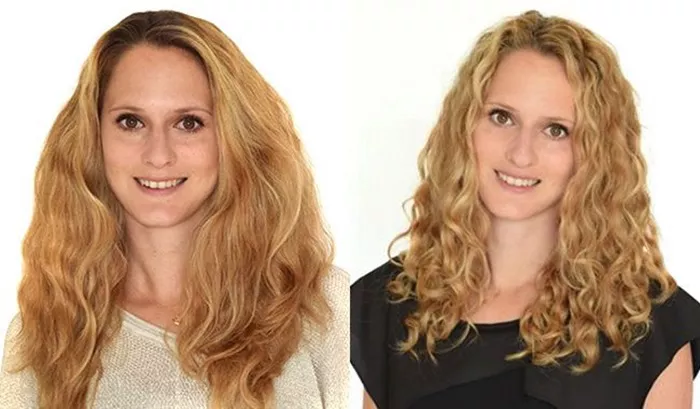Curly hair can be beautiful, but many people want straight locks for easier styling. While daily heat tools offer temporary results, this guide explores permanent and semi-permanent solutions backed by hair science. We’ll break down the pros, cons, and maintenance requirements of each method.
Understanding Hair Structure Basics
Hair gets its shape from protein bonds called disulfide bonds. Curly hair has more unevenly distributed bonds than straight hair. Permanent straightening methods work by breaking and reforming these bonds. Let’s explore how different techniques achieve this.
Chemical Relaxers – The Classic Approach
Chemical relaxers have been used since the 1940s. They contain sodium hydroxide or other alkaline agents that permanently alter hair structure.
How it works:
- Breaks disulfide bonds
- Reshapes hair into straight form
- Neutralizes chemical reaction
Pros:
- Lasts 8-12 weeks
- Works for all curl types
- Affordable (50−150)
Cons:
- Strong chemical smell
- Risk of scalp irritation
- Requires root touch-ups
Professional tip: Never apply relaxer to already-treated hair – this causes severe breakage.
Keratin Treatments – Semi-Permanent Smoothing
Popular Brazilian blowouts use formaldehyde (or alternatives) to coat hair with keratin protein.
Key facts:
- Lasts 3-5 months
- Reduces frizz by 70-80%
- Costs 200−500
- Contains 0.5%-2% formaldehyde
Safety note: Choose formaldehyde-free options if sensitive to chemicals. Always request proper salon ventilation.
Japanese Thermal Reconditioning – Precision Straightening
Developed in Japan, this multi-step process combines chemicals and heat (up to 450°F/230°C).
Process breakdown:
- Apply restructuring lotion
- Heat-seal with flat iron
- Neutralize bonds
- Deep condition
Advantages:
- Lasts 6-12 months
- Creates pin-straight results
- Works for coarse hair
Drawbacks:
- 5-8 hour salon session
- High cost (500−1,200)
- Not suitable for color-treated hair
Laser Hair Straightening – High-Tech Option
New laser devices claim to alter hair texture using concentrated light energy. FDA-cleared systems like Lumasoft show promise but need more research.
Current data:
- Requires 4-8 sessions
- Results last 1-2 years
- Costs 1,000−4,000
- May cause temporary dryness
Expert opinion: Consider this experimental. Consult a certified dermatologist before trying.
Home Care for Maintained Results
All permanent treatments need special aftercare:
- Use sulfate-free shampoo
- Avoid saltwater/swimming pools
- Apply weekly protein masks
- Sleep on silk pillowcases
- Trim ends every 8 weeks
Pro tip: Wait 72 hours after chemical treatments before washing hair for better results.
Risks and Damage Prevention
Permanent straightening carries risks:
- Hair breakage (23% users report)
- Scalp burns (5% cases)
- Color fading (for dyed hair)
- Cumulative damage over time
Damage control:
- Do strand tests first
- Space treatments 6+ months apart
- Use Olaplex No.3 weekly
- Avoid overlapping applications
Temporary Alternatives to Consider
For those not ready for permanent changes:
- Blowouts with round brush
- Flat iron (use heat protectant)
- Wrap-and-dry technique
- Silicone-based serums
- Straightening clip-in extensions
Conclusion
No method is 100% permanent due to new hair growth. The safest long-term option is Japanese straightening for coarse hair, while keratin treatments work best for wavy textures. Always consult certified stylists and prioritize hair health over perfect straightness.
Related topics:
How Can I Make My Curly Hair Straight Permanently
How to Avoid Straight Hairstyles from Looking Dull
How To Make Big Wavy Hair Look Most Natural


